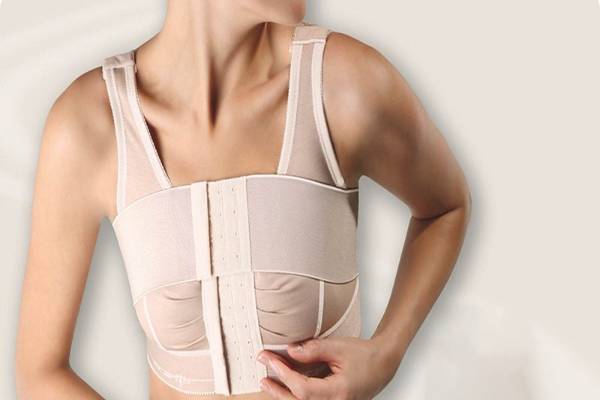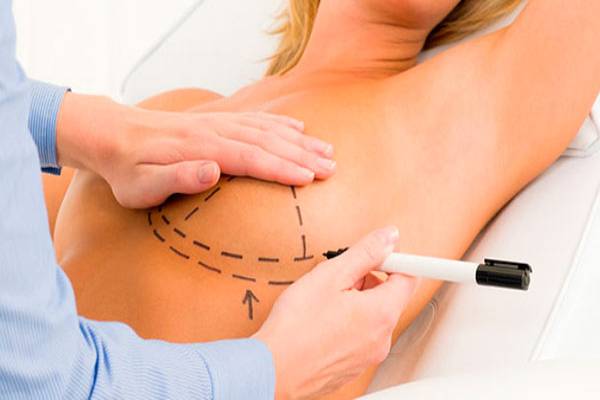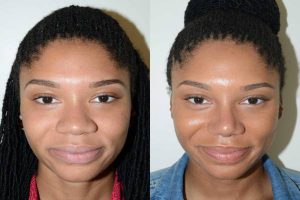Table of Contents
Breast reduction surgery, also called mammoplasty, is performed to eliminate excess fat, skin, and breast tissue. Excessively large breasts can cause mental and physical problems. During mammoplasty, by removing excess breast fat, the size of breast tissue is reduced to a size that fits the other organs of the applicant. There are many reasons, including cosmetic or medical advice to perform this procedure. In fact, according to statistics, more than 45,000 mammoplasty surgeries were performed in 2019. Keep reading on Moj Aramesh Amitis Health Tourism Company’s website to learn more about the pros and cons of mammoplasty.

Who is an ideal candidate for mammoplasty?
Mammoplasty or breast reduction surgery will be a good option for women with oversized breasts, followed by other problems, such as:
- Chronic pain in the shoulder and back of the neck that requires analgesics.
- Breas burning sensation
- Feeling uncomfortable while wearing a bra
- Decreased self-esteem and discomfort in the breasts
- Limited daily activity due to chest pain
- Heavy breathing during exercise
Who is not an ideal candidate for mammoplasty?
In general, mammoplasty surgery is not recommended for many people as well, including:
- People with a certain health conditions such as diabetes or cardiovascular diseases
- People with obesity
In addition to the items mentioned above, mammoplasty surgery in Iran is not recommended for some other people who intend to get pregnant, give birth or lose weight in the future. People who plan to give birth in the future after breast reduction surgery may have difficulty breastfeeding. Although some mammoplasty techniques in Iran help to breastfeeding mothers. However, it is recommended that this surgery be performed after delivery to prevent serious problems. People who want to lose weight may also have some breast resizing after surgery. Therefore, it is advisable to lose weight before mammoplasty surgery.
Advantages of Mammoplasty in Iran
- Reduce and relieve pain in the upper back, neck, and shoulders
- Increase self-confidence in people who feel uncomfortable with their breast size.
- Increase the ability to participate in various physical activities
- Reduce pain and rashes related to large breasts
Possible Risks of Mammoplasty Surgery
- Changes in nipple or breast sensation, which may be temporary or permanent
- Allergies to tape, suture materials, and glues, blood products, topical preparations, or injectable agents
- Potential, partial, or total loss of nipple and areola
- Skin discoloration, permanent pigmentation changes, swelling and bruising
- Pain, which may persist
- Excessive firmness of the breast
- Potential inability to breastfeed
- Deep vein thrombosis, cardiac and pulmonary complications
- Poor wound healing
- Anesthesia risks
- Breast asymmetry
- Blood clots
- Breast contour and shape irregularities
- Infection and bleeding
- Fluid accumulation
Also, Your ability to breastfeed following reduction mammoplasty may be limited; talk to your doctor if you are planning to nurse a baby. The breast reduction procedure can be performed at any age but is best done when your breasts are fully developed. The practice of medicine and surgery is not an exact science. Although good results are expected, there is no guarantee. In some situations, it may not be possible to achieve optimal results with a single breast reduction procedure and another surgery may be necessary.
How to prepare for mammoplasty?
Before mammoplasty, you should consult a specialist about the advantages and disadvantages of this surgery. Then, the necessary examinations are performed by a specialist surgeon. Among the necessary examinations during mammoplasty, the following can be mentioned:
- Evaluate your medical history and overall health
- Examine and measure your breasts
- Take photographs of your breasts for your medical record
- Discuss your expectations for breast size and appearance after the surgery
Before the Mammoplasty Surgery
Before breast reduction surgery, you might also be asked to:
- Complete various lab tests
- Get a baseline mammogram
- Stop smoking for a certain period before and after surgery
- Avoid taking aspirin, anti-inflammatory drugs, and herbal supplements, to control bleeding during surgery
Results of Mammoplasty
Breast reduction surgery is usually done under general anesthesia, either in a hospital or outpatient surgical facility. The surgeon usually makes an incision around the areola and down each breast, removes excess breast tissue, fat and skin to reduce the size of each breast, then reshapes the breast and repositions the nipple and areola. During mammoplasty, the doctor tries to symmetry the size and shape of the breasts. However, there may be slight changes in the size and shape of the breasts.
Mammoplasty Techniques
The specific technique used to reduce the size of your breasts can vary. The procedure might include:
- Surgery through incisions
- Liposuction to remove the excess fat in your breasts
After mammoplasty, your breasts are covered with bandages and a tube may be placed under each arm to prevent excess blood or fluid accumulation. It is also recommended to take analgesics and antibiotics after surgery to prevent infection. Finally, according to your doctor’s instructions, you should use elastic compressive bras to protect your breasts after surgery.
After Mammoplasty
Most people undergoing mammoplasty can be discharged from the hospital immediately as long as they do not have any side effects. Before discharge, your surgeon will give you post-operative instructions, including how to take care of the scar and take oral and topical medications to relieve pain and heal the wound. After mammoplasty surgery, you should limit your physical activity for two to four weeks so that your breasts heal faster. It is also forbidden to make any movement that may stretch the chest muscles or tear the stitches. It is also forbidden to wear shelf bras for several months after surgery. You may have trouble raising your arms for several weeks after surgery, so you should ask others to help you. Avoid heavy lifting for several weeks. Because it will rupture the stitches. Smoking in people who have recently had mammoplasty surgery can increase the risk of possible complications and even disrupt the healing process. Also, people who are overweight may be more prone to possible complications after mammoplasty.
Unusual Symptoms After Mammoplasty
If you experience shortness of breath, chest pains, or unusual heartbeats, seek medical attention immediately. Should any of these breast reduction complications occur, you may require hospitalization and additional treatment. Following your physician’s instructions is key to the success of your surgery. The surgical incisions must not be subjected to excessive force, abrasion, or motion during the time of healing. Your doctor will give you specific instructions on how to care for yourself and minimize breast reduction surgery risks.

Mammoplasty in Iran
In general, mammoplasty surgery in Iran is very appropriate and a high percentage of applicants for this surgery have expressed their satisfaction. Iran has reputable and well-equipped medical centers that are fully prepared to perform mammoplasty. Iran is also one of the most prestigious centers for mammoplasty in the world with the presence of experienced physicians. If a person decides to have mammoplasty surgery in Iran to relieve pain and improve breast problems or other medical problems, some insurance companies may pay a percentage of the cost of the surgery or the total cost. However, if the breast reduction surgery is performed for aesthetic purposes, no percentage of the cost will be covered by insurance companies.
To receive advice about mammoplasty surgery in Iran, you can contact the experienced consultants of Moj Aramesh Amitis Health Tourism Company and get answers to their questions.
Author: Sh. Khazaei
Translator: N. Rahimifar




